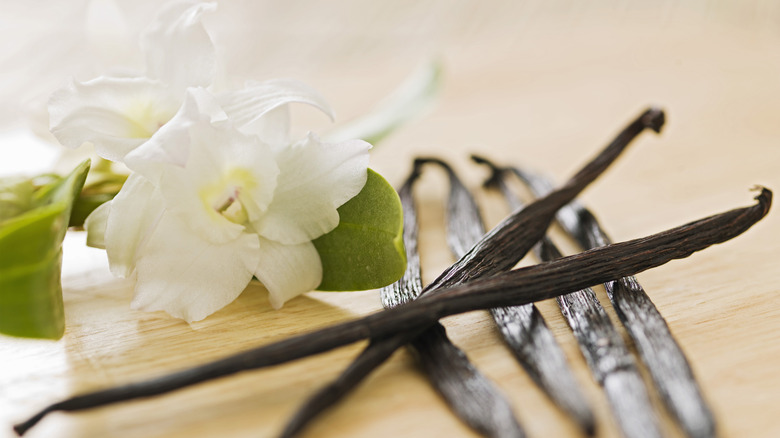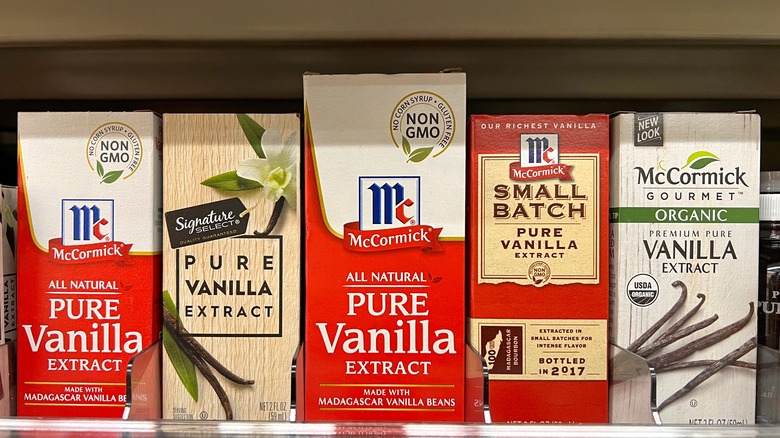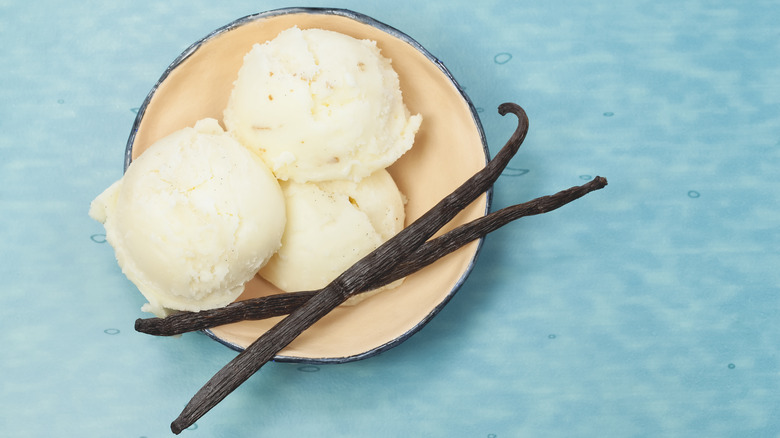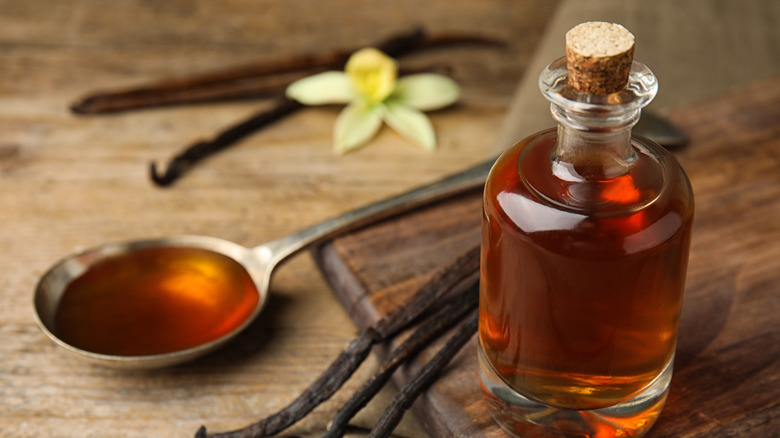Vanilla Paste Vs. Vanilla Extract: What's The Difference?
According to Britannica, the vanilla flavor we know and love comes from the seed pods of climbing orchids native to Central and South America. The ancient Aztecs mixed it with chocolate to create the drink known as xocóatl; European colonizers later spread it around the world. Now, it's a common ingredient in baked goods, ice cream, candy, and perfumes.
Taste of Home explains that the richest, purist taste comes straight from the bean. You probably won't want to make them your go-to vanilla source, as vanilla beans can be expensive and not very shelf-stable. Plus, scraping the beans from the pods can be time-consuming. In short, they're not the best option for that big batch of cupcakes you're making for your kid's kindergarten class.
However, if you want to add a special twist to a vanilla-centric dessert like crème anglaise or vanilla cream puffs, they may be worth the splurge. You can also use vanilla powder, a spice made from ground vanilla beans — but, according to The Spruce Eats, it can be hard to come by.
So what are your other options? Vanilla extract is the most common, but vanilla paste deserves a place in your pantry, too. But what is vanilla paste? And how does it differ from vanilla extract?
What is vanilla extract?
According to Food & Wine, vanilla extract is made by steeping vanilla beans in alcohol — a process simple enough to make at home. While vodka is the standard choice, you can substitute another high-proof alcohol like rum or brandy for a complex, flavorful extract that you can't find in your average grocery store. Though recipes vary, you can use one vanilla bean per two ounces of liquor and let it infuse for two to 12 months.
If you're shopping for vanilla extract at the store, Taste of Home recommends looking for a bottle labeled "pure" vanilla. While imitation vanilla is okay in a pinch, it has an unpleasant aftertaste and lacks the rich flavor of the real stuff.
Vanilla extract is a great way to add richness and dimension to baked goods. However, it's not necessarily the best option for desserts where vanilla is the star of the show. If you want flavor that really packs a punch, consider using vanilla paste instead.
What is vanilla paste?
Real Simple writes that vanilla bean paste is a syrupy blend of vanilla extract and vanilla powder. Vanilla paste is studded with flecks of vanilla beans, just like the tiny seeds you see in ice cream. It has an intense flavor, and it's a great option for people who don't want to deal with the cost or hassle of beans but need a flavor punch you can't get from extract. It also adds a nice visual touch thanks to the little black seeds in vanilla paste, your desserts will have that "real vanilla" look and taste.
However, vanilla paste is not without its drawbacks. According to Taste of Home, it's more expensive and not as readily available as vanilla extract. Many vanilla pastes use sugar or corn syrup as a binder, which you'll want to avoid so be sure to read the label. Plus, while you can generally use the same amount of paste as extract, vanilla paste varies in intensity. If you're not sure how much to use, check the packaging for pointers.
Are vanilla extract and vanilla paste interchangeable?
According to MasterClass, vanilla extract and vanilla paste can often — but not always — be used interchangeably. Thanks to its price, accessibility, and convenience, vanilla extract is ideal for baked goods like chocolate chip cookies and cupcakes. Compared to vanilla paste, you might be able to find a wider variety of types, too. Vanilla paste typically comes from Madagascar vanilla, but Food & Wine notes that you can readily find vanilla extracts made from Mexican or Tahitian vanilla, which each have their own unique flavor profiles.
Aside from flavor and appearance, vanilla paste has one major advantage over extract: it's perfect for desserts with a delicate texture. The thin, liquid consistency of vanilla extract can dilute some desserts like frosting or Chantilly whipped cream, so if you're worried that vanilla extract could add too much liquid to your desserts consider vanilla paste instead.
What if you're out of vanilla entirely? Substitute bourbon or dark rum. The rich, caramel flavor can enhance your baked goods and keep them from tasting bland.



